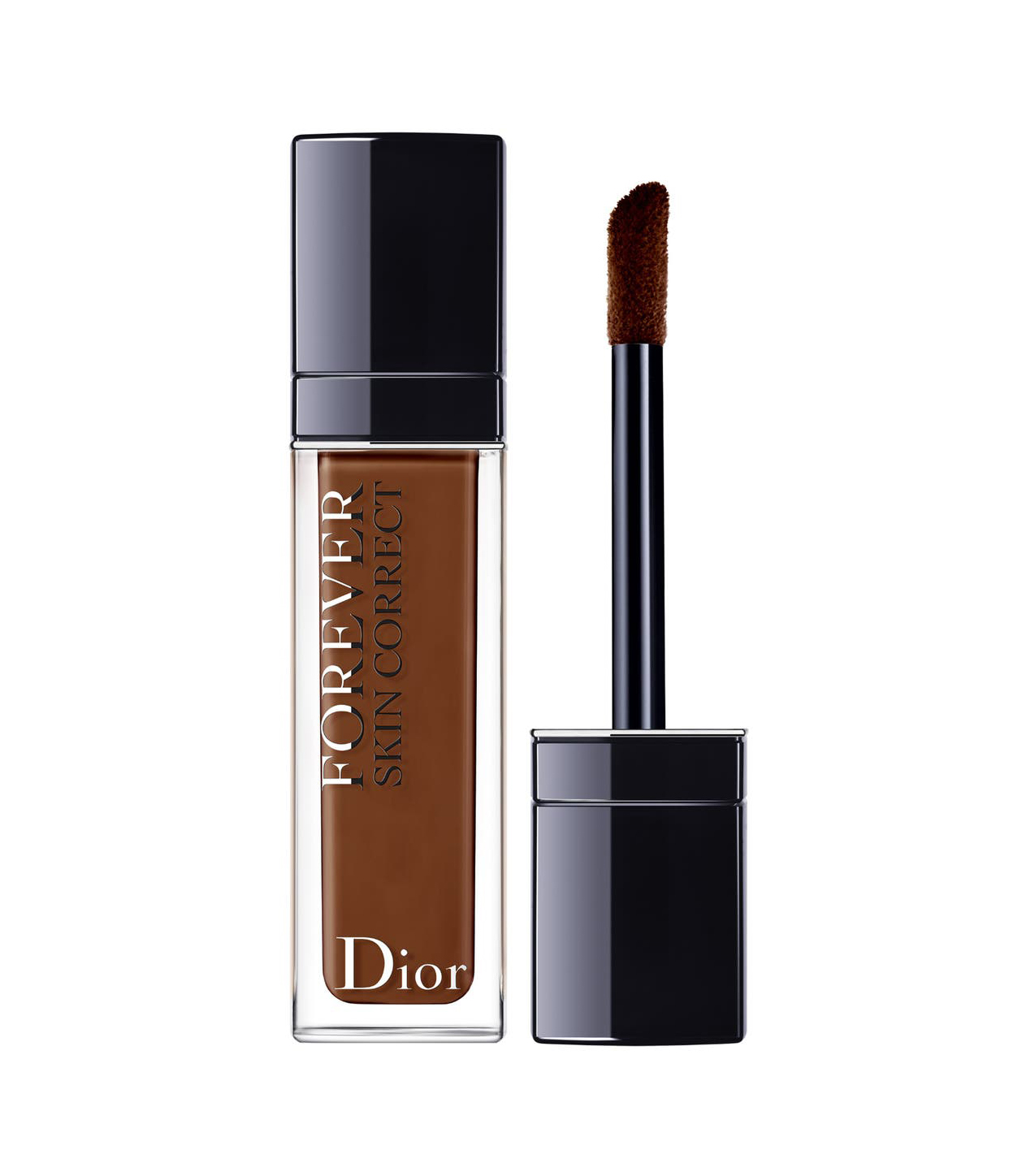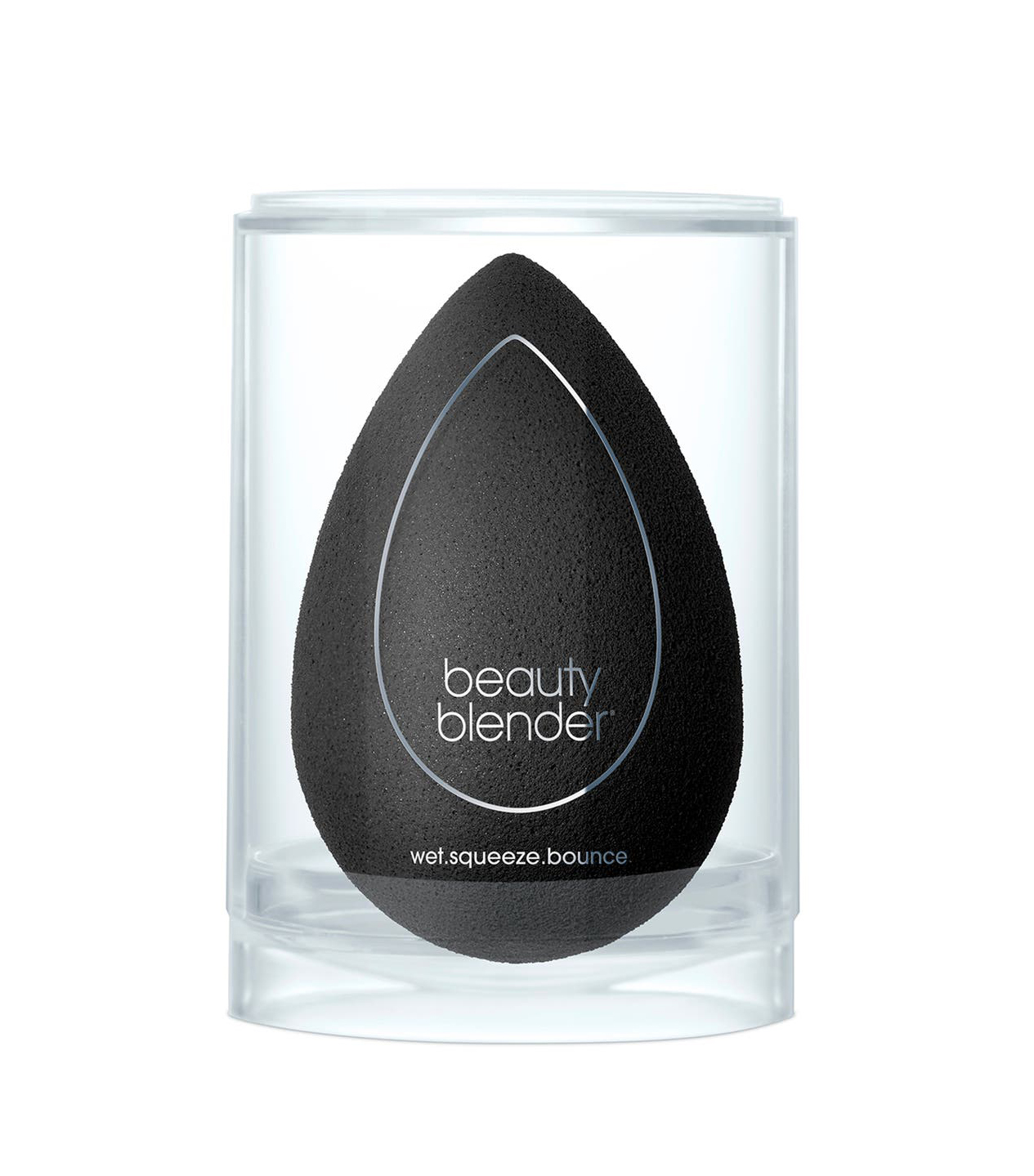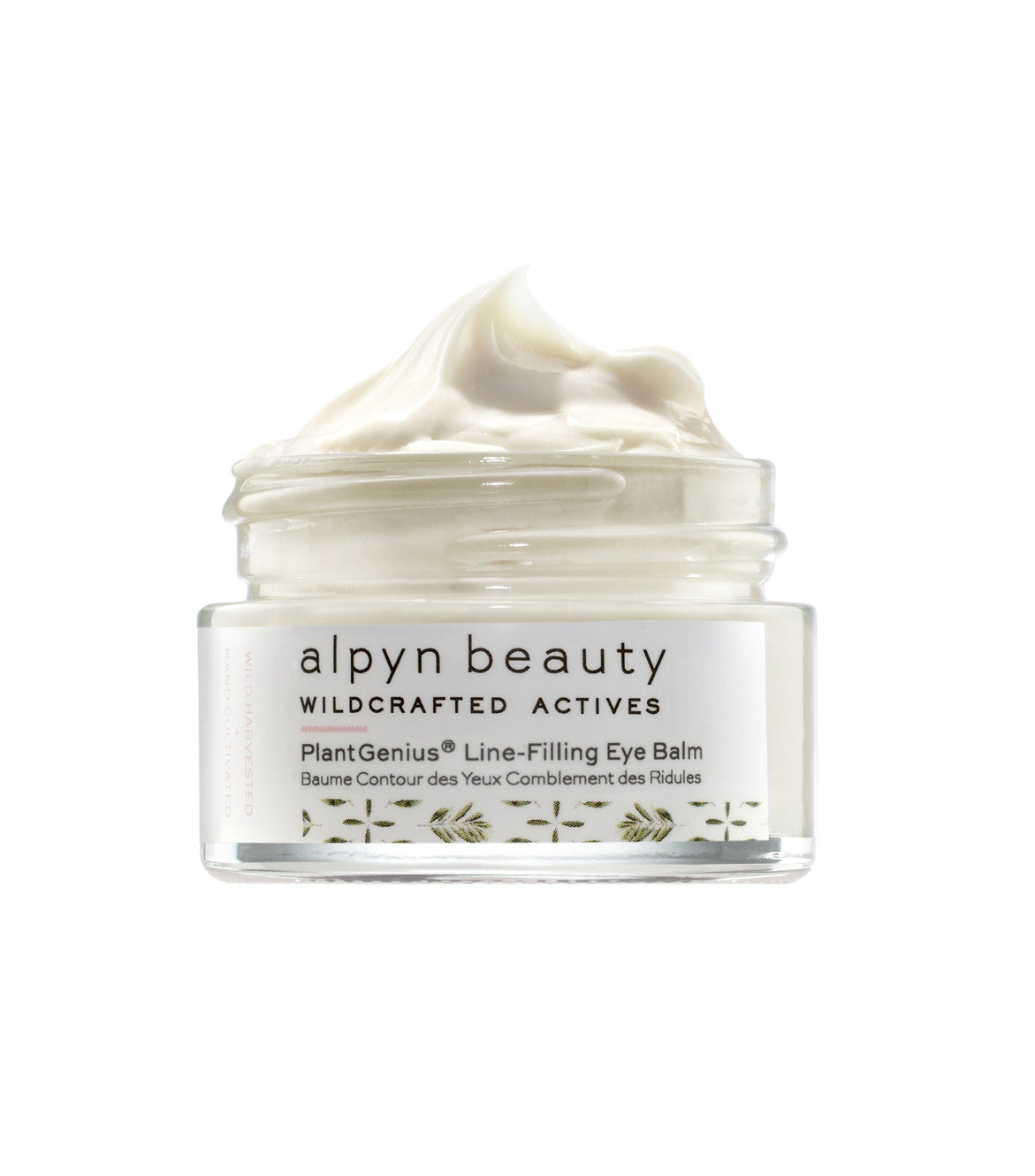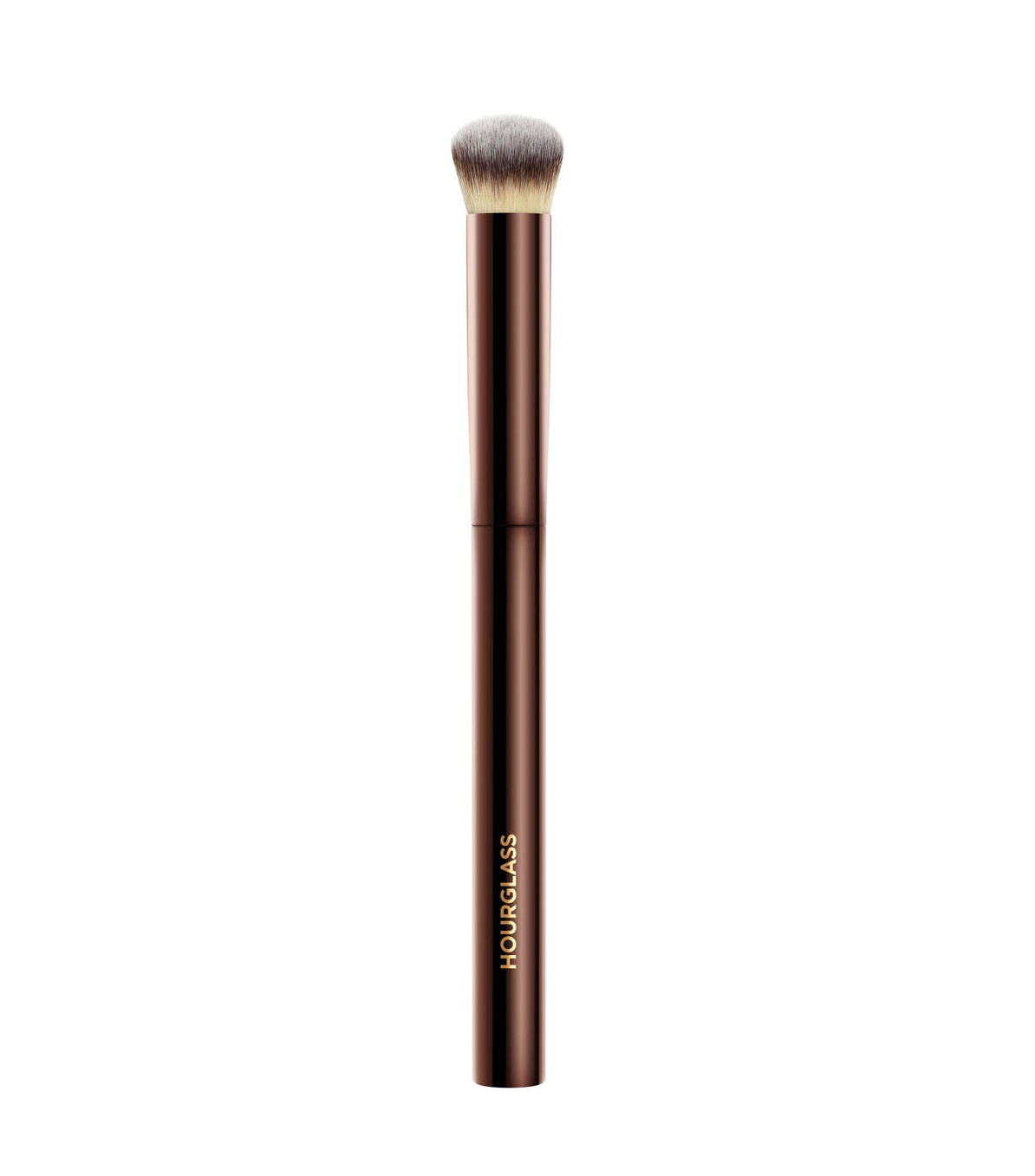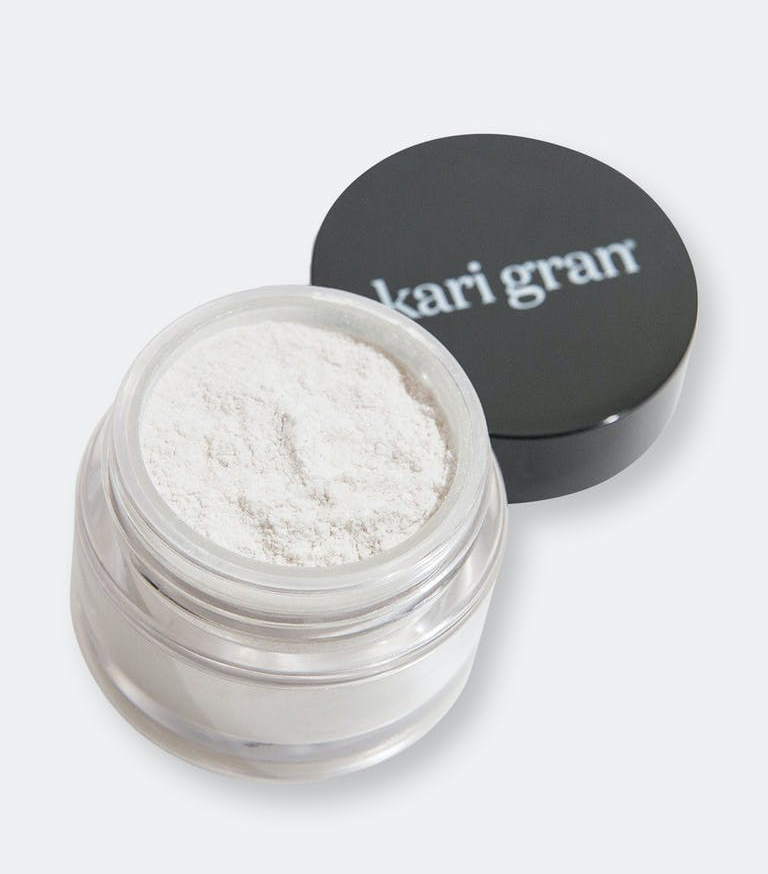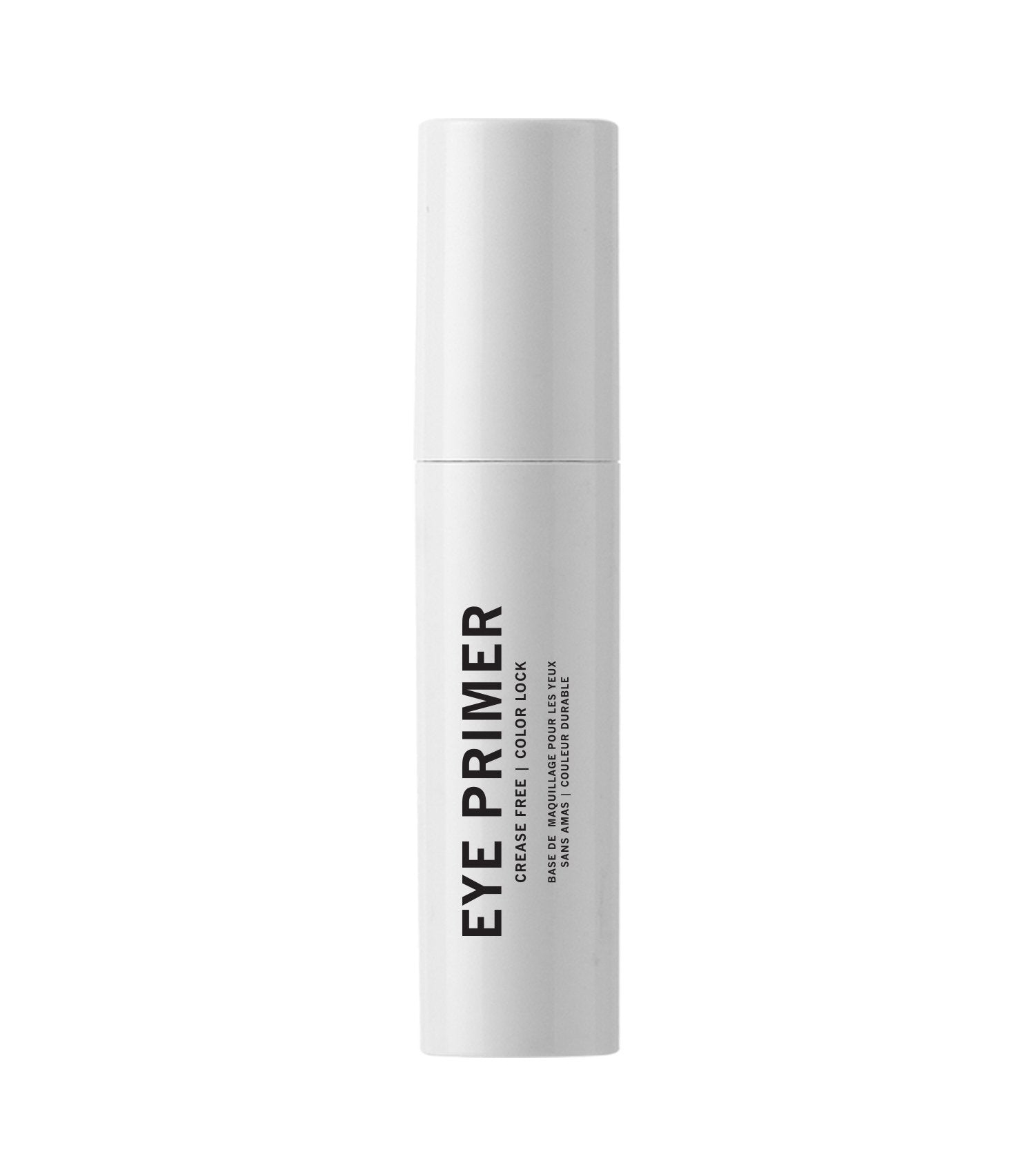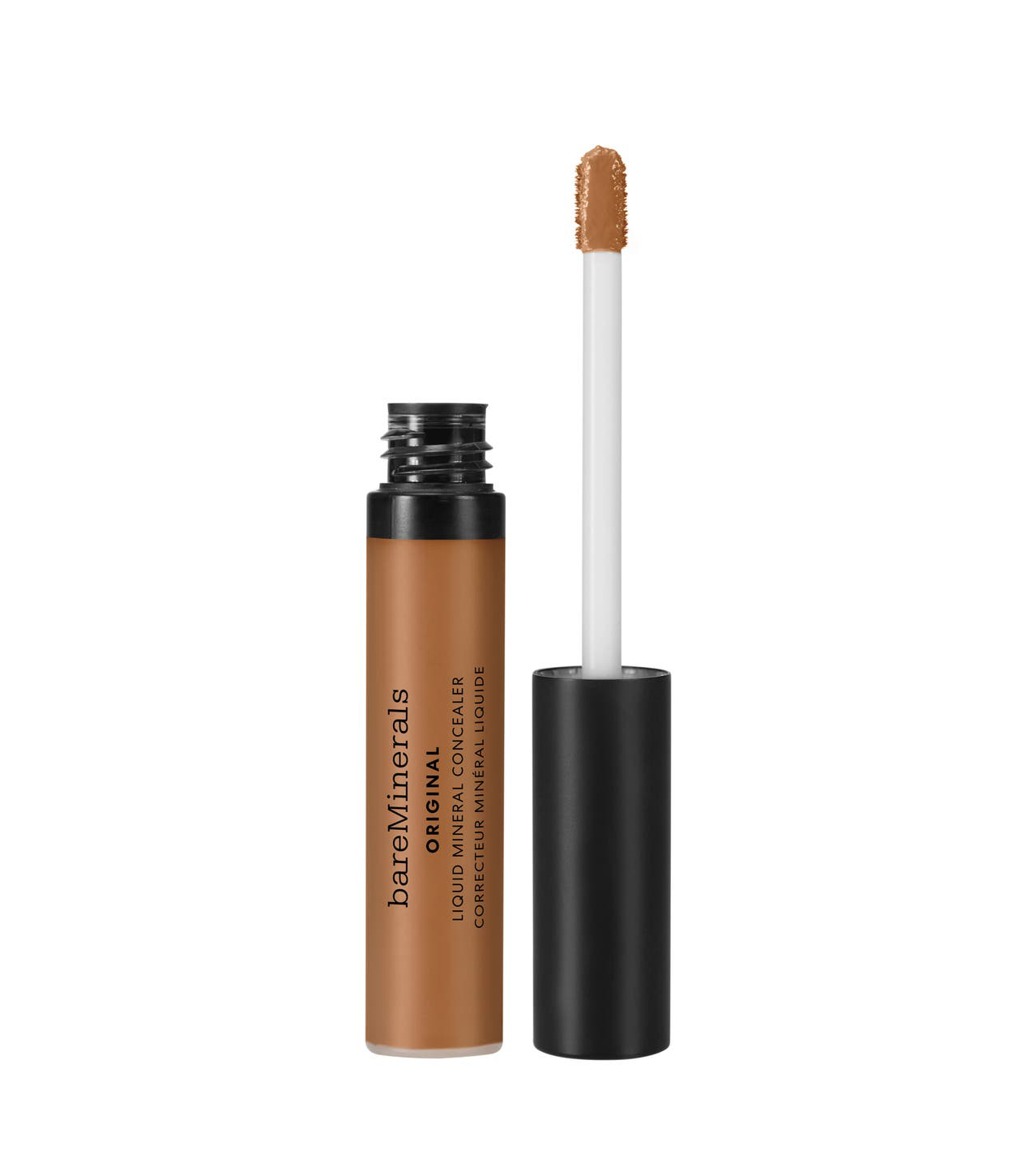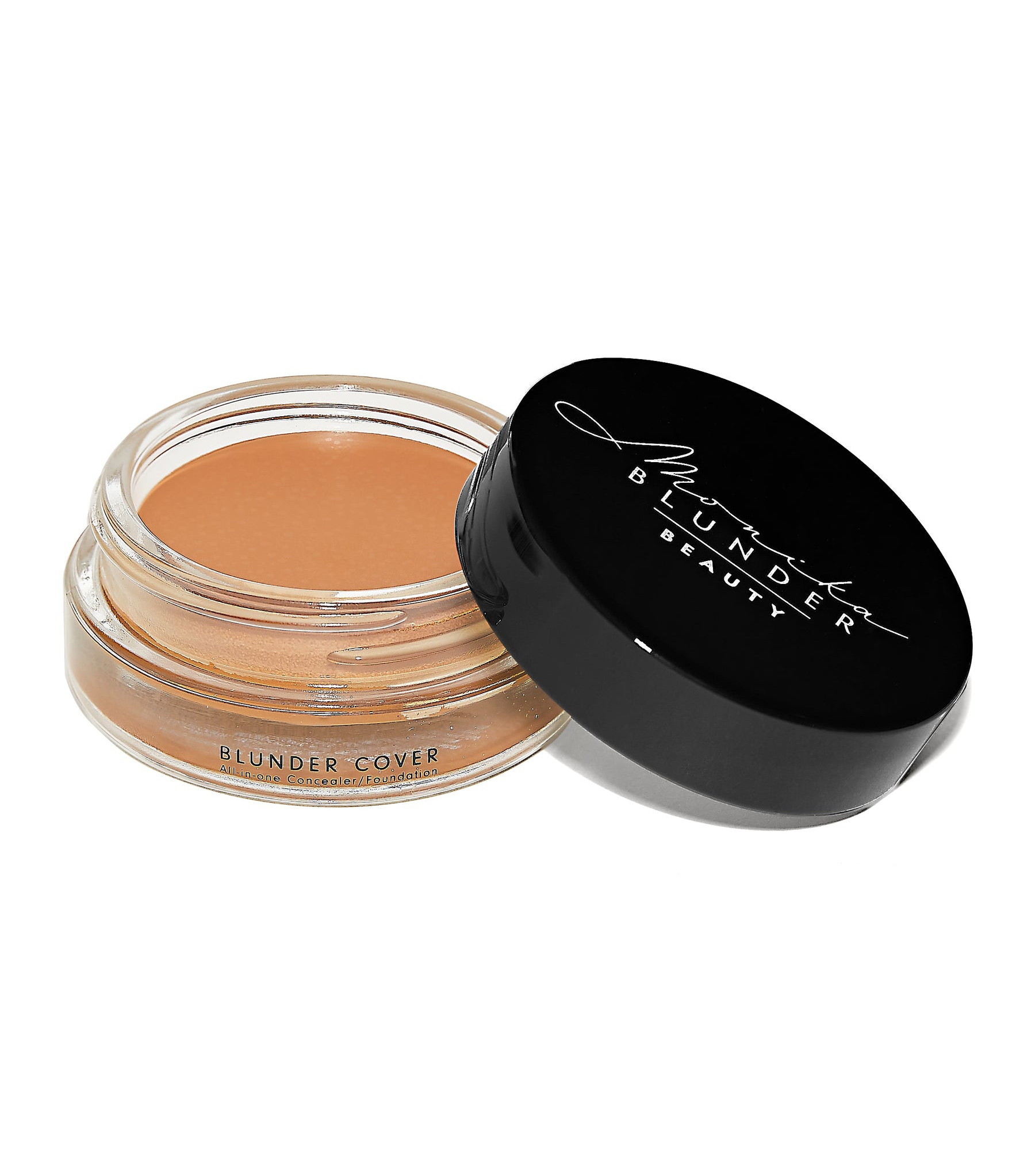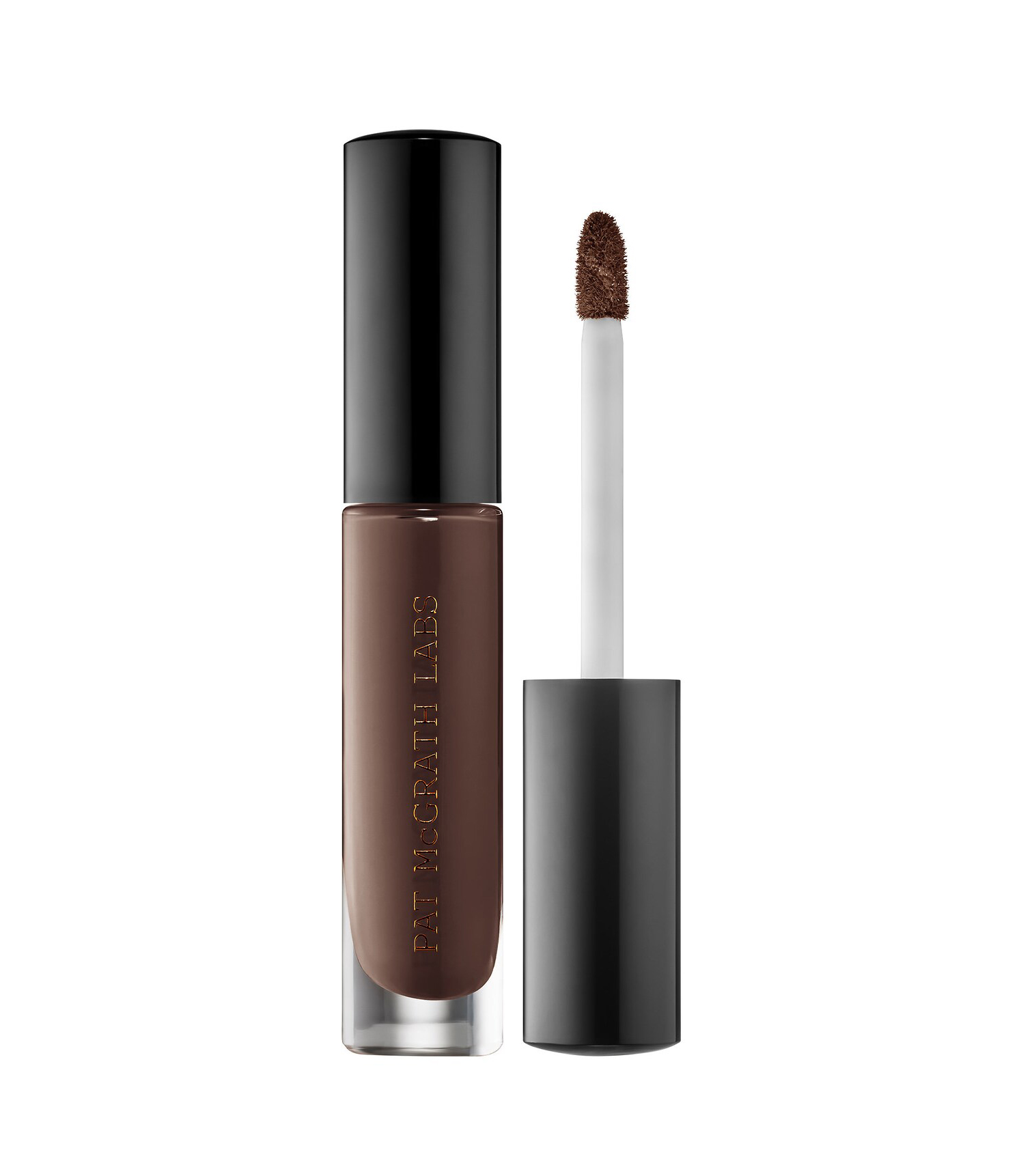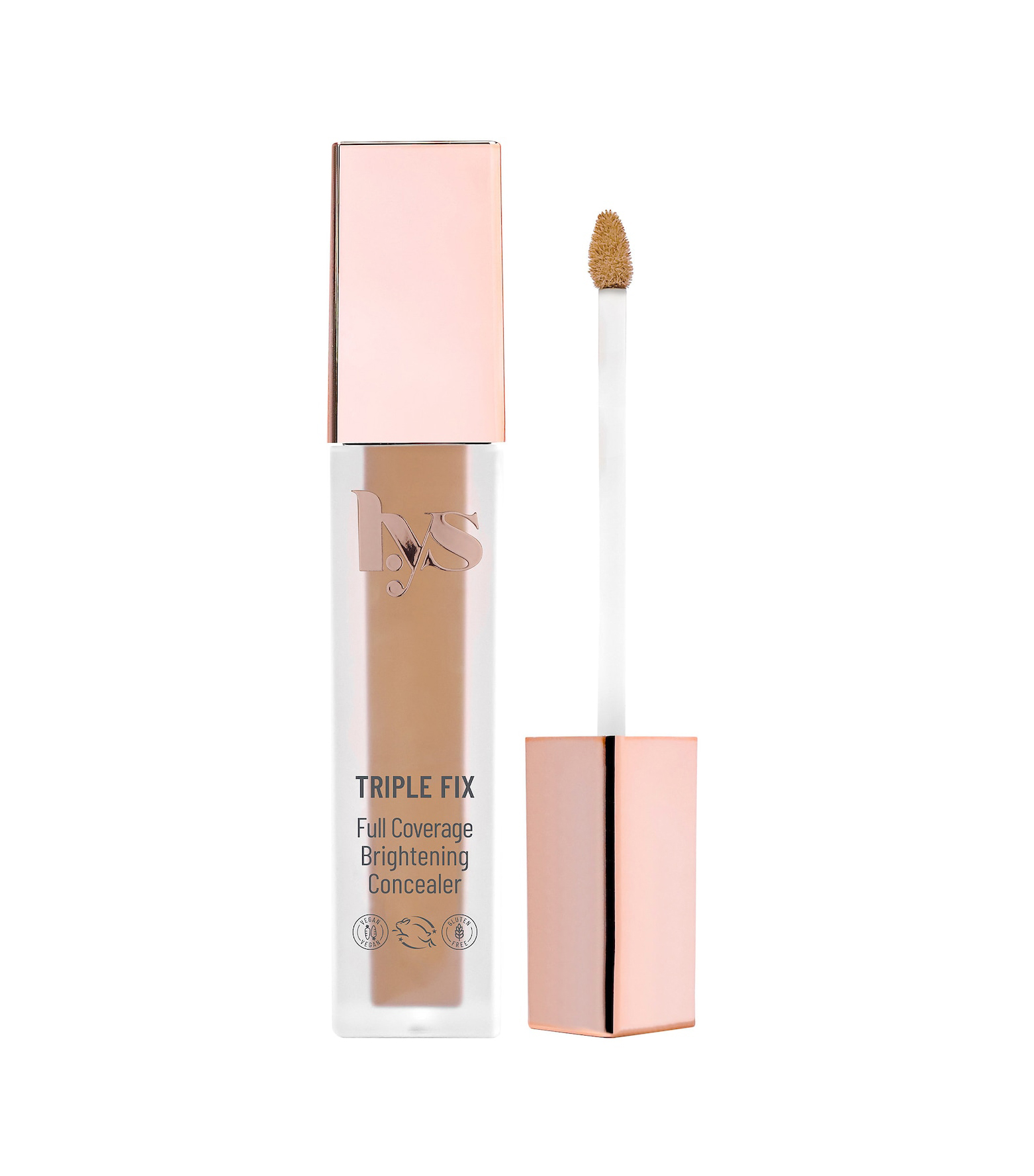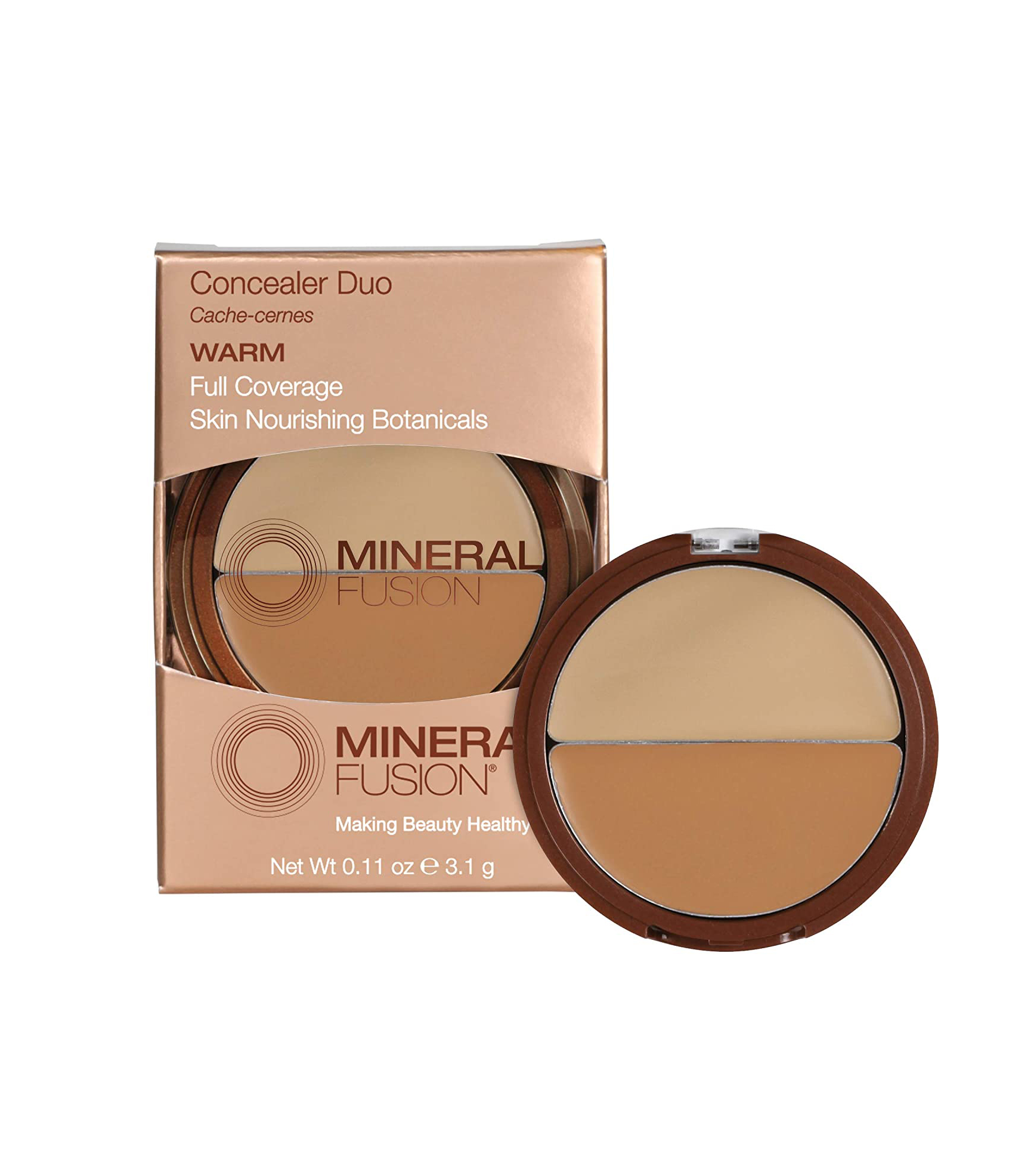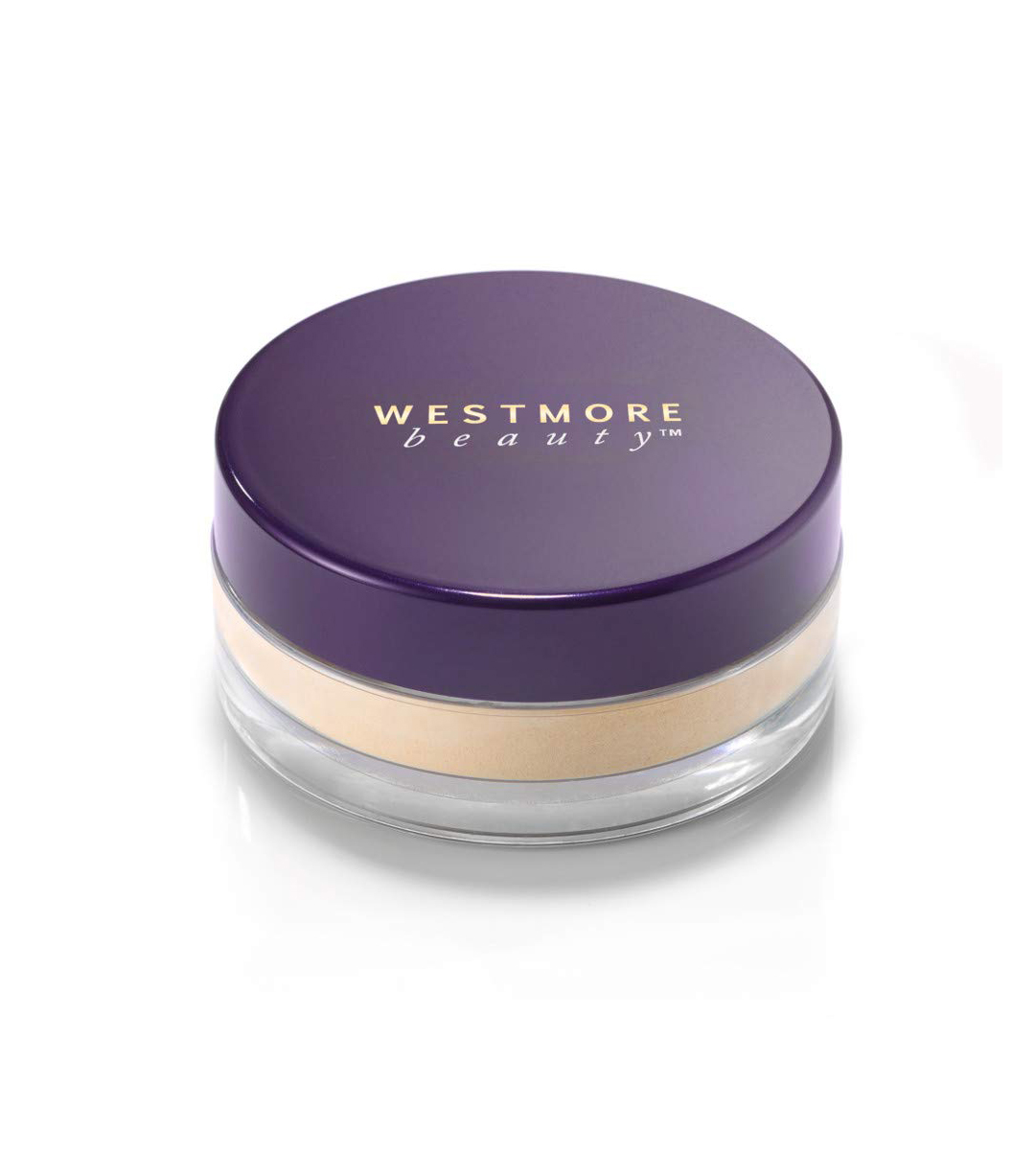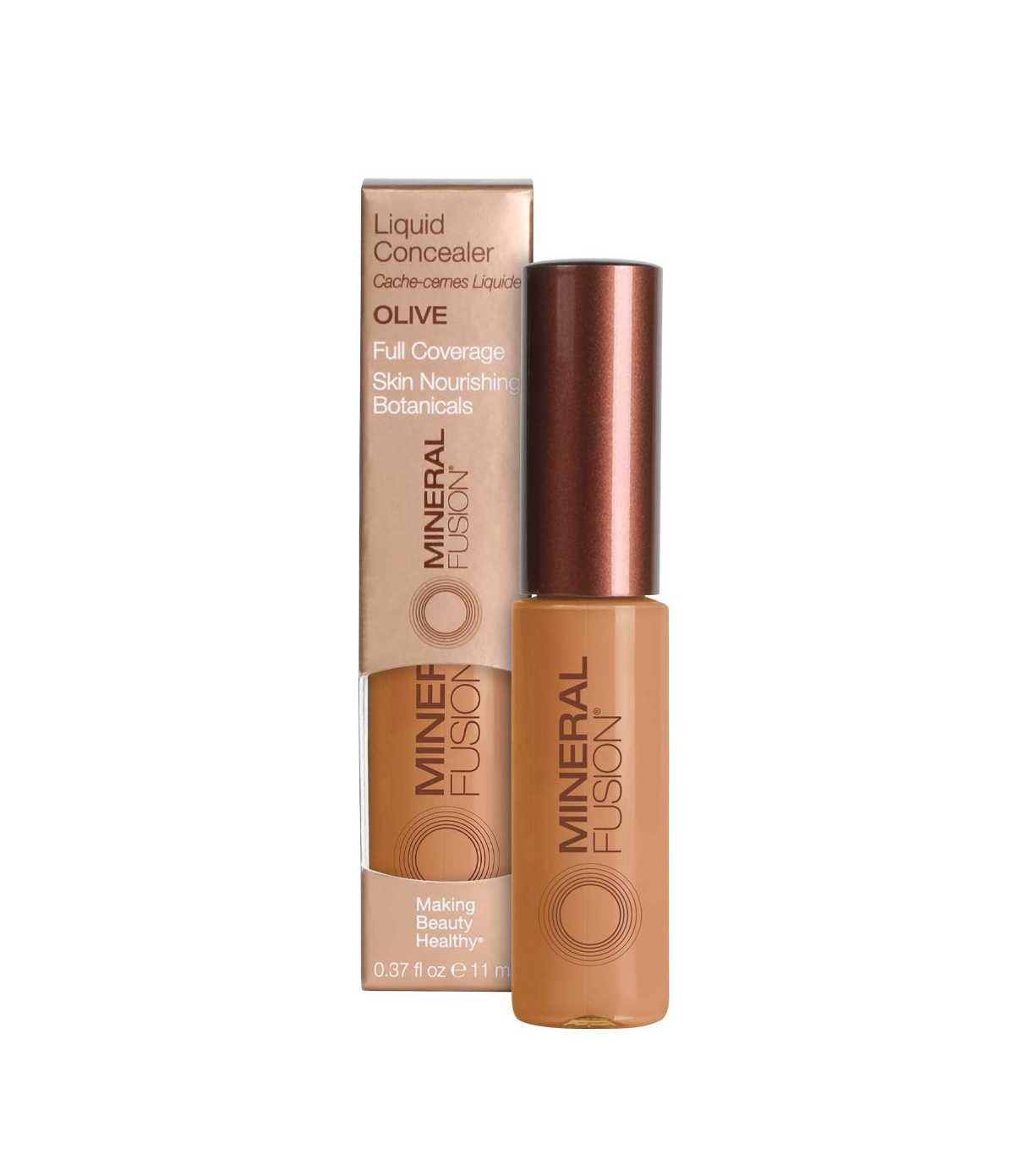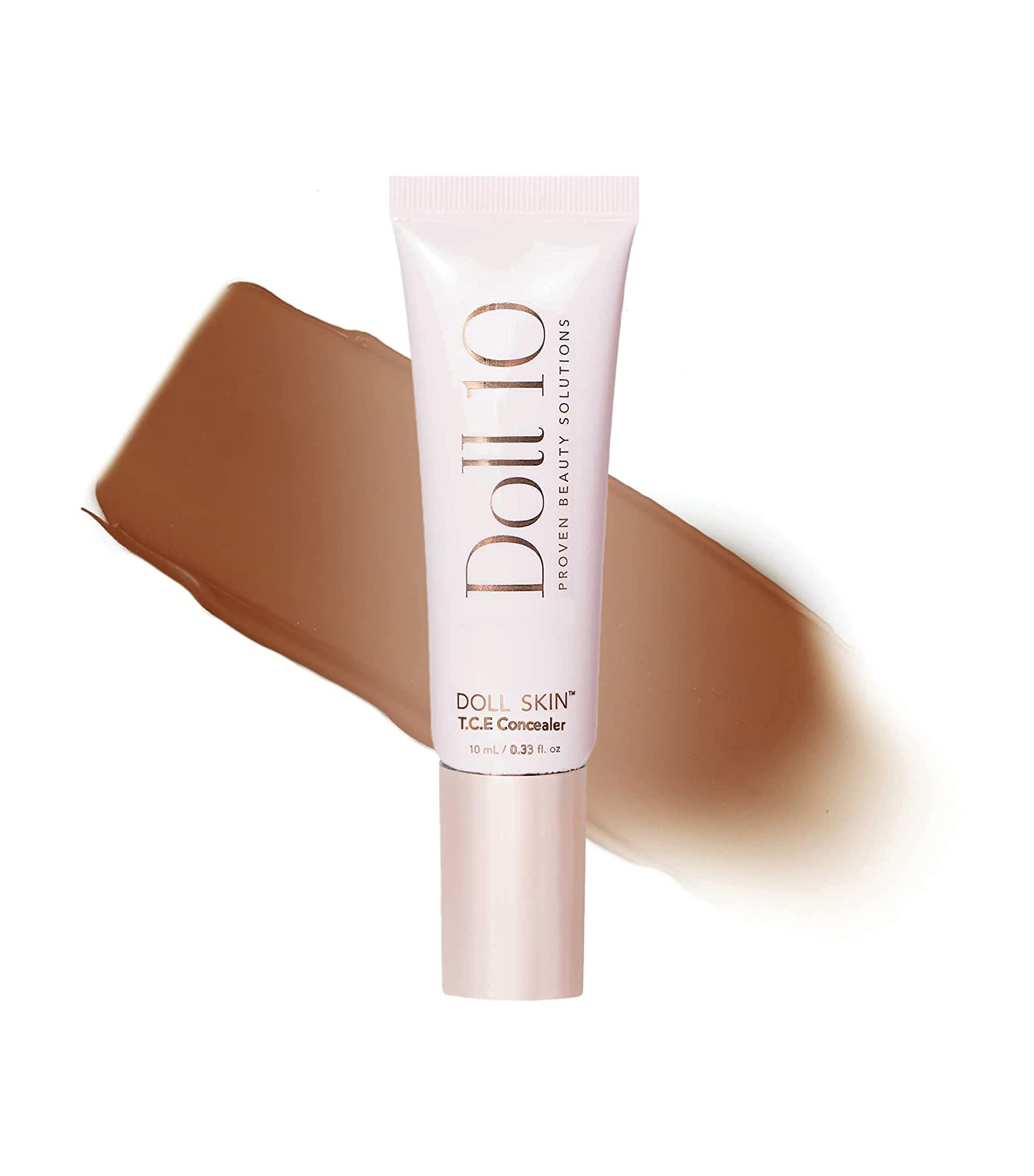Wow—I Wish I Had Known These 12 Completely Ingenious Concealer Hacks Years Ago
Unless you have baby-like skin, you probably use concealer, whether that's every day or once in a while. It's a universal product that can probably be found in most (if not all) makeup bags. But while concealer can come in handy for that flawless-skin look, it can also look very wrong if you don't know how to apply it correctly or haven't gotten the shade just right. Think cakey texture, flakiness, or a shade that's too light or too dark.
So I decided to talk to some makeup artists to get their concealer trade secrets. See what they have to say below.

1. Don't Use One Concealer for Everything
Celebrity makeup artist Samantha Lau says one common mistake people make with concealer is using the same one for everything. They'll use it for both dark circles and blemishes or use their winter shade of concealer when they have a tan.
"The skin under the eyes often has more blue, purple, or brown tones, and using a shade that matches the rest of the face can exacerbate those tones, making them look worse," says celebrity makeup artist Fiona Stiles. "You need to color correct a bit under the eye, so a dual concealer, one that comes with a tone for covering and one for correcting, is a lifesaver."
For the under-eye area, celebrity makeup artist Emma White Turle recommends looking for something with an undertone of orange or peach to brighten the area and erase blue shadows.
2. Think About Consistency
You want to pay attention to the formulation, too. "Ideally, you need two different types of concealer: one that's creamy and one that's drier for covering stubborn pimples," Stiles says. "Anything too emollient or creamy will slide off the taut skin of an angry blemish during the day."
And think about your skin type, too. "To cover oily areas (such as spots), a liquid may be easier, and if it's a drier area, a cream or stick concealer may work best. It's a personal choice overall, though. There are a lot of concealers that work on a wide range of skin types now," Turle says.
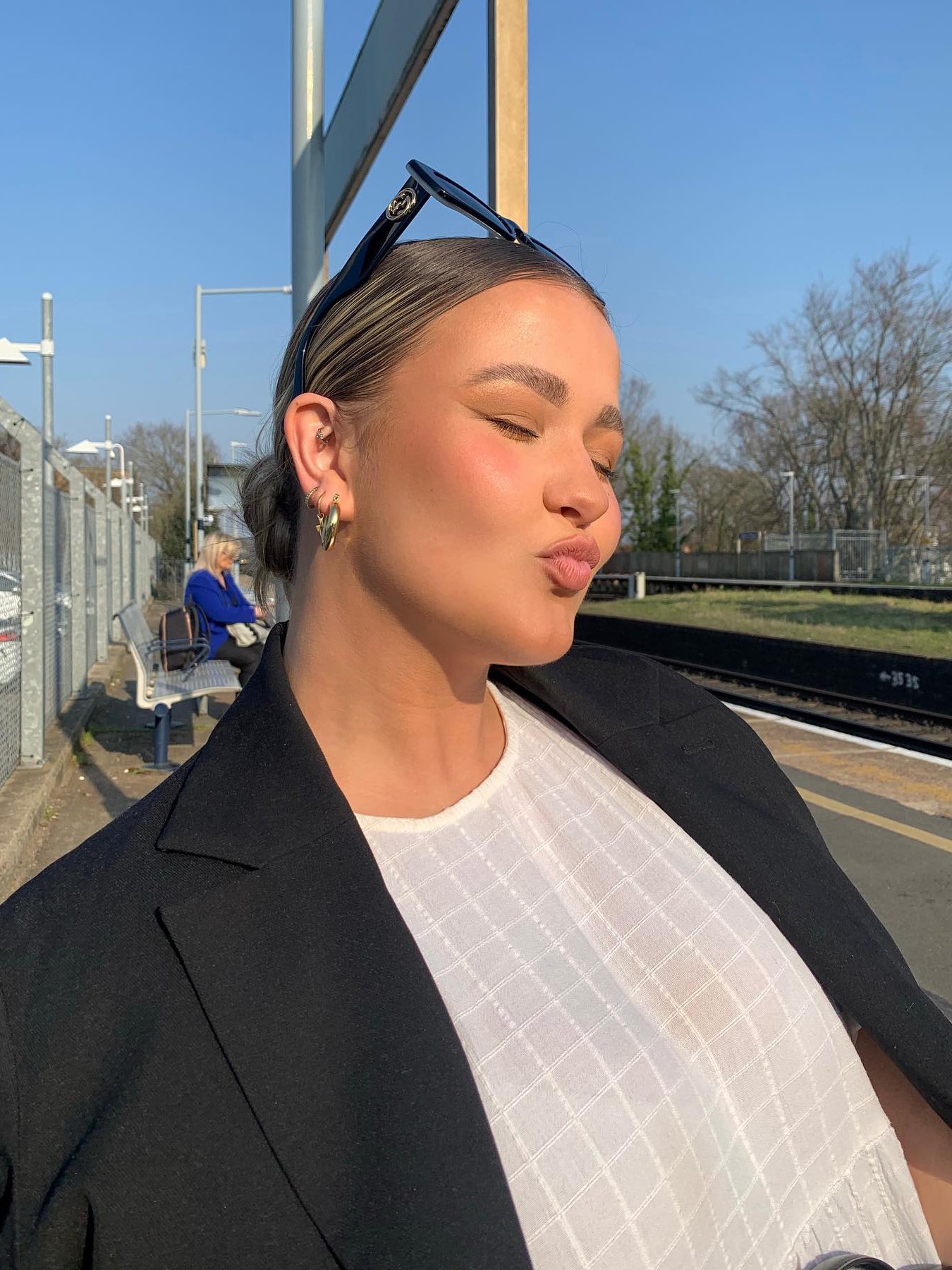
3. Think About Areas You Want to Cover
Stiles recommends radiant concealers for the under-eye area to add brightness, but if you have oily skin, avoid using them in the T-zone area. Turle adds that you'll also want to avoid using an illuminating concealer on blemishes.
Celebrity makeup artist Jamie Dorman recommends only applying a concealer that's lighter than your skin tone on areas you want to bring forward or spots that are especially pigmented. "When you highlight the whole eye area, you make the parts you want to hide more apparent," she says. "Instead, after using a concealer the same shade as your foundation all over your eye area, put the lighter shade only on the areas that still need help or are recessed."
4. No-Makeup Makeup Trick
If you're a fan of the no-makeup makeup look and want to wear a concealer without any foundation or tinted moisturizer, Stiles suggests avoiding heavy matte formulas and going for something that's more emollient or radiant so it feels more skin-like and blends more seamlessly onto the face.
And if you're the opposite and prefer full coverage with foundation, Turle shares this tip: "Taking your concealer from the inner corner all along under the eye and then down to the edge of your nostril and up again (it's an inverted right-angled triangle) will lighten and give a flawless finish," she says. "Pressing this into the skin with a damp sponge blender tends to work best for this full-coverage effect."
5. Shade-Matching Tips
"If you're using concealer to cover spots and pimples, shade match on the area where you're most likely to need it," Stiles says. "If you break out on your chin most frequently, test the shade there. If you break out on your cheeks or forehead, test the shade on those areas."
As for finding the right shade for you, check out your skin's undertones. "Knowing your skin's undertone is most helpful. You can find this by looking at your wrist in daylight. If your veins appear green, then you are likely to have a warm undertone. If your veins are blue, then you have a cool undertone. If it's a little of both, then you are neutral. This narrows down your concealer search considerably," Turle says.
6. Hydrate the Skin
"Make sure your under-eye area is hydrated. Use a hydrating eye cream like Alpyn Beauty's PlantGenius Line-Filling Eye Balm to prevent caking," Dorman says.
7. Let the Concealer Sit
"I think one of the most useful tips I've got for concealer, whether for your under-eye or for blemishes, is once that you've dotted it where you want to blend it, leave it for 30 seconds," Turle says. "The product starts to adhere to the skin and is less likely to slide, especially on freshly moisturized skin."
8. Apply Strategically
"As we get older, more concealer isn't necessarily the answer. It's all about placement," Turle says. "Focusing on the inner corner under the tear duct and then adding a little to the outer corner, flicking up as if doing a cat eye, adds light to the area and lifts the eyes."
9. Use a Fluffy Brush
"I like using a fluffy brush to apply concealer. It buffs the extra product away, giving it a natural finish," Lau says. Stiles adds that she actually prefers brushes instead of using her fingers. "When you're covering an area to conceal, don't just pat it into the areas you're trying to cover," she says. "Concentrate the concealer on the blemish or dark spot to conceal, and then use a brush to feather out the edges to blend it seamlessly into the skin. I'm a big fan of brushes when it comes to using concealer because you can so delicately manipulate the product, unlike using your fingers."
10. Smooth Before Setting
"I like to smooth the areas where I applied concealer before setting it with powder, especially for the under-eye area," Lau says. "This prevents the powder from settling into fine lines."
11. Blot
"Blot your concealer with oil-blotting sheets before powdering to keep your concealer from getting too thick. Use a light powder like Kari Gran's Mineral Setting Powder," Dorman says.
12. Use a Primer
"The eye primer from Heir Atelier is a brilliant hack for making concealer stay on pimples," Stiles says. "It gives the concealer a texture that's grippy and helps it sticks easily, ensuring that the concealer adheres to the skin all day. I'll also very lightly brush it under the eyes after concealer in lieu of powder to set the area and prevent mascara from transferring onto the skin below the lashes."
Makeup Artist–Recommended Concealers to Shop
Both Lau and Turle recommend this one. "My favorite is Clé de Peau's concealer as it works on a multitude of things I want to conceal," Turle says. "It's perfect under the eyes as it doesn't crease and gently brightens. It also sits well over blemishes. It's the perfectly balanced concealer."
"I've been using the BareMinerals's liquid concealers a lot lately. They have such a nice skin-like finish, especially for the under-eye area, making it look bright and hydrated," Lau says.
"Monika Blunder's Blunder Cover is a cream concealer that can double as a foundation," Stiles says. "It's lightly emollient and comes in a great range of shades. You can use a little or a lot depending on the coverage you want. The formula is beautiful and easy to use."
"The Shade & Illuminate concealers from Tom Ford come in a great range of colors and have incredible coverage. You can thin it out to use instead of foundation, use it for spot concealing, or cover annoying blemishes. It's very versatile," Stiles says.
Lau also recommends Pat McGrath's concealers. She says they look like second skin and have a great color range.
Dorman says this concealer has hyaluronic acid, which hydrates the skin while it provides coverage.
"It comes with a concealer shade and a correcting shade so you can tackle multiple issues that need covering and correcting," says Stiles. "The formula is creamy and easy to use, and the brightening shade knocks out the blue, purple, and brown, making the under-eye area instantly brighter."
Stiles says this stick is very dry, which means it's ideal for covering tricky blemishes since it sticks well to the skin.
"This formula builds easily and emulsifies as it's applied to skin," Dorman says. "This is a great formula for those with oily skin."
This concealer is very creamy, covers seamlessly, and has excellent skincare ingredients in the formula, Stiles says.
"This concealer has silicones with smaller molecules so it blends easily and lasts all day," says Dorman.
Next, The Reviews Are in, and We Have Mixed Feelings About This Viral New Beauty Balm
Sarah is lifestyle writer and editor with over 10 years of experience covering health and wellness, interior design, food, beauty, and tech. Born and raised in Los Angeles, she attended New York University and lived in New York for 12 years before returning to L.A. in 2019. In addition to her work at Who What Wear, she held editor roles at Apartment Therapy, Real Simple, House Beautiful, Elle Decor, and The Bump (sister site of The Knot). She has a passion for health and wellness, but she especially loves writing about mental health. Her self-care routine consists of five things: a good workout, “me” time on the regular, an intriguing book/podcast/playlist to unwind after a long day, naps, and decorating her home.
-
 Coniglio Palm Beach Just Launched At Shopbop— Consider These Vacation-Ready Pieces For Your Next Getaway
Coniglio Palm Beach Just Launched At Shopbop— Consider These Vacation-Ready Pieces For Your Next GetawayYour wardrobe for your next tropical stay is here.
-
 Yes, Cyber Month Is Over, But Nordstrom Just Dropped Some Sneaky New Markdowns—These 16 Are Best
Yes, Cyber Month Is Over, But Nordstrom Just Dropped Some Sneaky New Markdowns—These 16 Are BestShop these surprise deep discounts ahead of the holidays.

